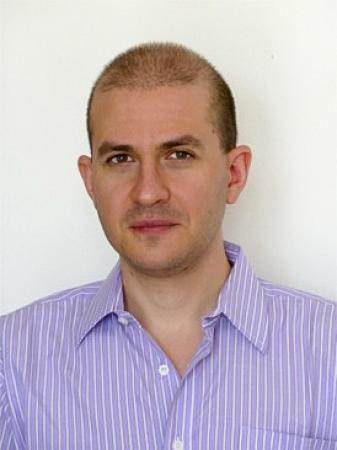
Lorenzo Sironi
Lorenzo Sironi
Columbia University
Friday, February 23, 2018
3:00pm
Abstract: The bright radio emission from shocks in galaxy clusters requires efficient electron acceleration to non-thermal energies, but the acceleration mechanism remains poorly understood. With multi-dimensional particle-in-cell (PIC) fully-kinetic simulations, we find that electrons are efficiently accelerated via a Fermi-like process, by bouncing between the upstream region and the shock front. The upstream scattering is provided by oblique firehose modes, which are self-generated by the electrons escaping ahead of the shock. We also investigate the physics of electron heating in galaxy cluster shocks, motivated by recent X-ray observations. We find that magnetic field amplification — induced by shock compression of the pre-shock field, or by strong proton cyclotron and mirror modes accompanying the relaxation of proton temperature anisotropy — can drive the electron temperature anisotropy beyond the threshold of the electron whistler instability. The growth of whistler waves breaks the electron adiabatic invariance, and allows for efficient electron heating.
Bio: I am an Assistant Professor in the Department of Astronomy at Columbia University. I obtained my Ph.D. in 2011 in the Department of Astrophysical Sciences at Princeton University. Then, I moved to the Institute for Theory and Computation (ITC) at the Harvard-Smithsonian Center for Astrophysics, where I was first a NASA Einstein Post-Doctoral Fellow and then an ITC Post-Doctoral Fellow. My field of research is theoretical high-energy astrophysics. I investigate the origin of non-thermal emission from Pulsar Wind Nebulae (PWNe), AGN jets, gamma-ray bursts (GRBs), supernovae, galaxy clusters, and low-luminosity accretion flows like Sgr A* at the center of our Galaxy. It is still a mystery how these objects can accelerate particles up to the highly non-thermal energies required to explain the observed spectra, that typically extend from the radio up to the gamma-ray band. By means of ab initio large-scale plasma simulations, I investigate particle acceleration in shocks and magnetic reconnection from first principles, with the aim of using the simulations to interpret the observations, and ultimately unveil the nature of astrophysical non-thermal sources.